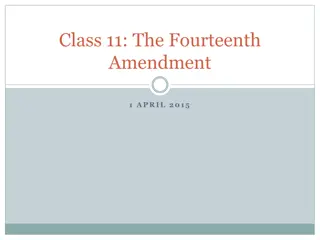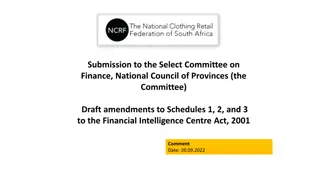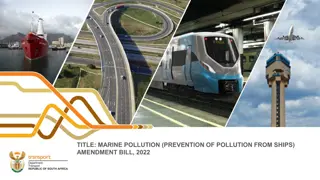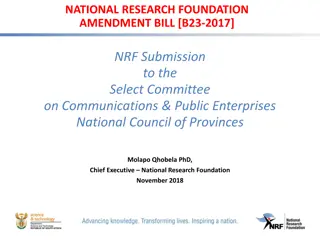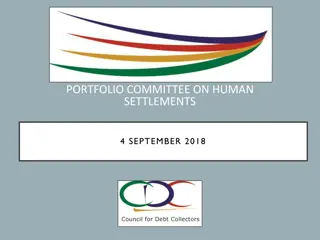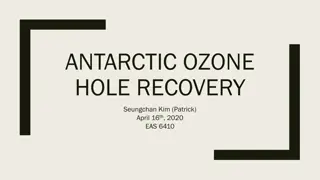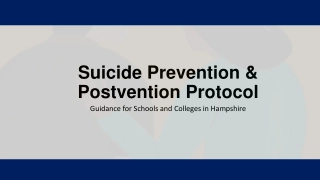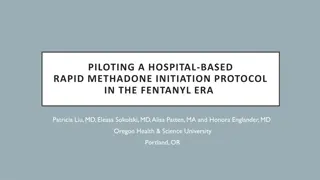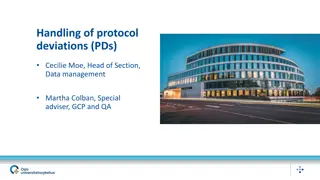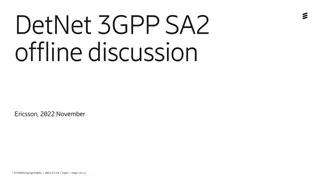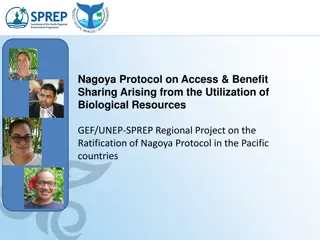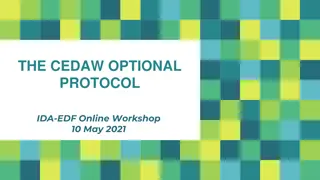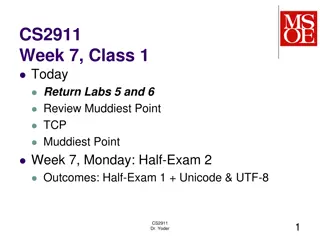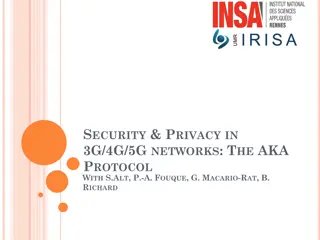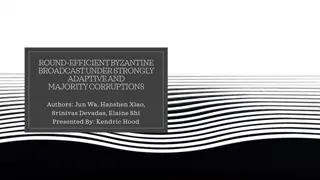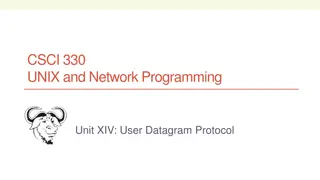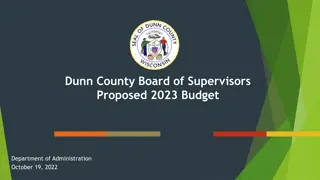Proposed Ratification of the Kigali Amendment to the Montreal Protocol
South Africa seeks Parliament's approval to ratify the Kigali Amendment to the Montreal Protocol, targeting the phase-down of hydrofluorocarbons (HFCs) to protect the ozone layer. The amendment requires new reporting on HFC production, imports, and exports, with different baselines for developing countries and specific nations. Financial provisions and the relationship with the UNFCCC are also highlighted.
Download Presentation

Please find below an Image/Link to download the presentation.
The content on the website is provided AS IS for your information and personal use only. It may not be sold, licensed, or shared on other websites without obtaining consent from the author. Download presentation by click this link. If you encounter any issues during the download, it is possible that the publisher has removed the file from their server.
E N D
Presentation Transcript
SECRET SA S PROPOSED RATIFICATION OF THE AMENDMENT TO THE MONTREAL PROTOCOL ON SUBSTANCES THAT DEPLETE THE OZONE LAYER TO INCLUDE HYDROFLUOROCARBONS (HFCS) (THE KIGALI AMENDMENT) PARLIAMENT MARCH 2019 SECRET 1
SECRET PURPOSE To request Parliament to approve South Africa s ratification of the Amendment to the Montreal Protocol on Substances that Deplete the Ozone Layer to include hydrofluorocarbons (HFCs), (the Kigali Amendment). SECRET 2
SECRET KIGALI AMENDMENT TO THE MONTREAL PROTOCOL TO PHASE DOWN HFCS The 28th MOP, held in Kigali, Rwanda, in October 2016, adopted the Kigali Amendment to phase down HFCs; HFCs are greenhouse gases falling under the scope of the UNFCCC; HFCs were introduced to the Montreal Protocol as a replacement for HCFCs; The amended MP includes provisions requiring new reporting of data and information by the parties on production, imports and exports of each HFC listed in Annex F for the relevant years, 2020 to 2022 for Article 5, group 1 parties, 2024 to 2026 for Article 5, group 2 parties; feedstocks, amounts destroyed by technologies approved by the parties, imports and exports, emissions, etc. SECRET 3
SECRET BASELINES The decision and its annex state that most developing country Parties will use a baseline averaging their calculated levels of HFC consumption for the years 2020, 2021, and 2022, plus 65% of their baseline consumption of HCFCs; The decision and its annex state that Bahrain, India, Iran, Iraq, Kuwait, Oman, Pakistan, Qatar, Saudi Arabia, and the UAE will use a baseline averaging their calculated levels of HFC consumption for the years 2024, 2025, and 2026, plus 65% of their baseline consumption of HCFCs. 4 SECRET
SECRET ARTICLE 10 (FINANCIAL MECHANISM) The MLF is the financial mechanism and it has been very successful before in supporting A5 (developing) countries; The United States Policy change with regards to the Climate Change Paris agreement is concerning as it might have a negative impact on the finances; Sufficient additional financial resources will be provided by non-Article 5 Parties to offset costs arising out of HCFC obligations for Article 5 Parties under this amendment. Relationship with the United Nations Framework Convention on Climate Change (UNFCCC) The Parties agreed to Article III in the consolidated amendment text from the LDG stating that the Kigali Amendment is not intended to have the effect of excluding HFCs from the scope of the commitments contained in relevant articles of the UNFCCC or those of its Kyoto Protocol, but complimentary SECRET 5
SECRET PHASE-DOWN SCHEDULES The decision and its annex provide that the majority of Article 5 Parties, SA included, will have the following phase-down schedule: 2024-2028: 100% 2029-2034: 90% 2035-2039: 70% 2040-2044: 50% 2045 and thereafter: 20% The second group of Article 5 parties, i.e., Bahrain, India, Iran, Iraq, Kuwait, Oman, Pakistan, Qatar, Saudi Arabia, and UAE, will have the following phase-down schedule: 2028 to 2031: 100% 2032 to 2036: 90% 2037 to 2041: 80% 2042 to 2046: 70% 2047 and thereafter: 15% 6 SECRET
SECRET BASIC DOMESTIC NEEDS In order to satisfy the basic domestic needs of Article 5 Parties, these countries calculated levels of production may exceed their limit by up to 10% of calculated production levels of controlled substances in Annex F. Emissions of substances generated as a byproduct Each party manufacturing Annex C Group I or Annex F substances shall ensure that for the twelve-month period commencing 1 January 2020, and in each twelve-month period thereafter, its calculated level of emissions of Annex F, Group II substances generated as a byproduct in each production line that manufactures Annex C, Group I or Annex F substances does not exceed 0.1% of the mass of Annex C, Group I or Annex F substances manufactured in that production line during the same twelve-month period. Article 4B (Licensing) Each party shall, by 1 January 2019 or within three months of the date of entry into force of the paragraph, whichever is later, establish and implement a system for licensing the import and export of new, used, recycled and reclaimed controlled substances in Annex F. The paragraph also states that non-Article 5 parties not in a position to establish and implement such a system by 1 January 2019 may delay taking those actions until 1 January 2021. 7 SECRET
SECRET ARTICLE 5 (SPECIAL SITUATION OF DEVELOPING COUNTRIES) A text stating that in order to meet basic domestic needs and subject to any adjustments made to the control measures in Article 2J, has been included; The majority of Article 5 parties shall be entitled to delay their compliance with the control measures as follows: 2024 to 2028: 100% 2029 to 2034: 90% 2035 to 2039: 70% 2040 to 2044: 50% 2045 and thereafter: 20% 8 SECRET
SECRET RECOMMENDATIONS It is recommended that Parliament approves SA s ratification of the Amendment to the Montreal Protocol on Substances that Deplete the Ozone Layer to include hydrofluorocarbons (HFCs) (the Kigali Amendment). 9 SECRET


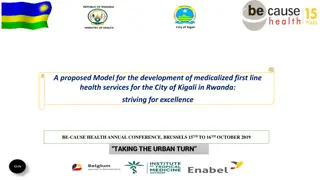
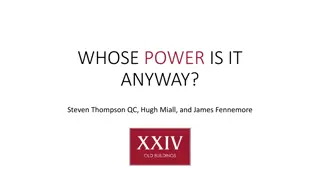
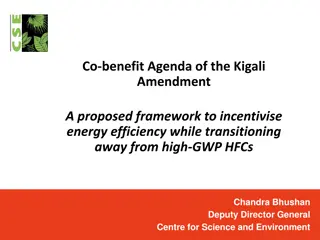
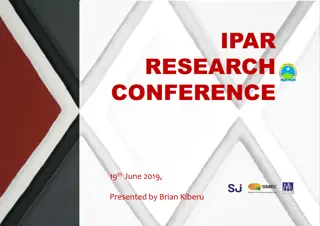



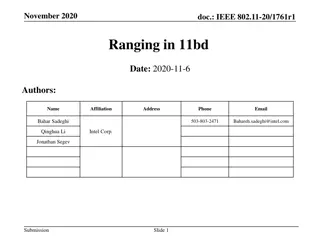

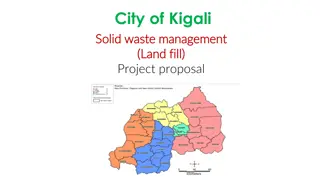
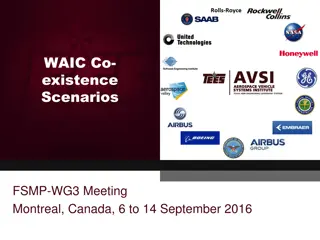


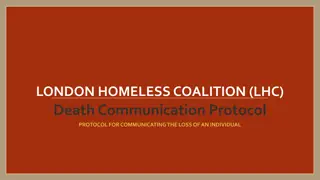
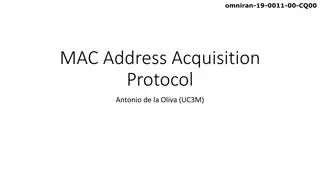





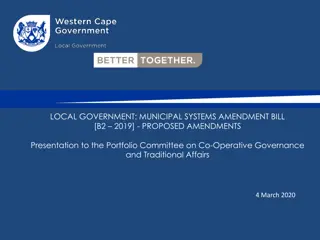
![RE: ELECTORAL MATTERS AMENDMENT BILL [ B42-2023]](/thumb/18837/re-electoral-matters-amendment-bill-b42-2023.jpg)

